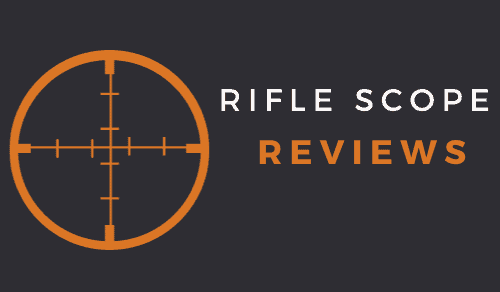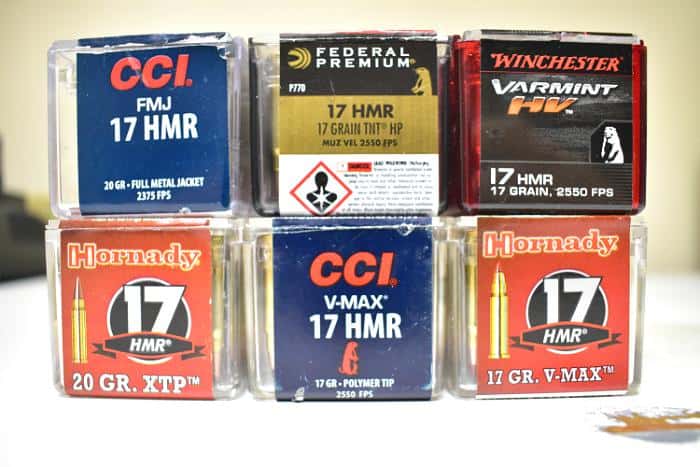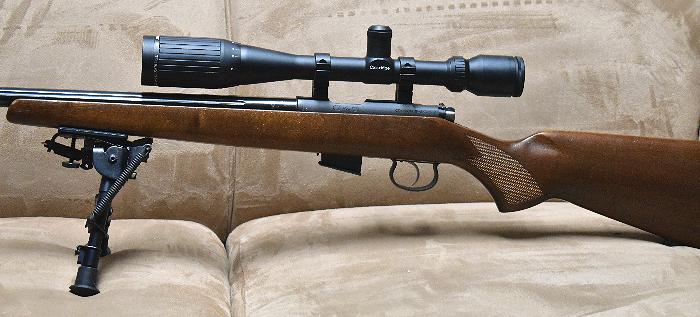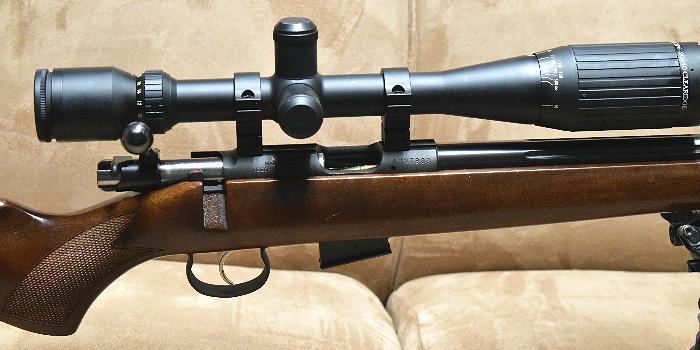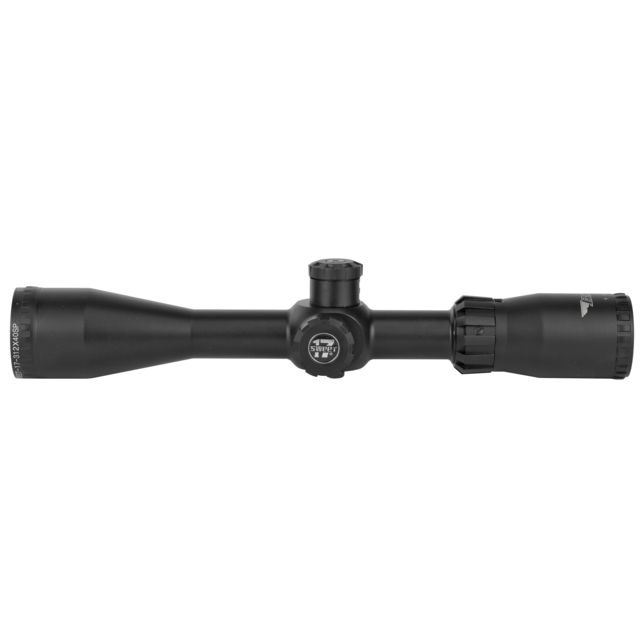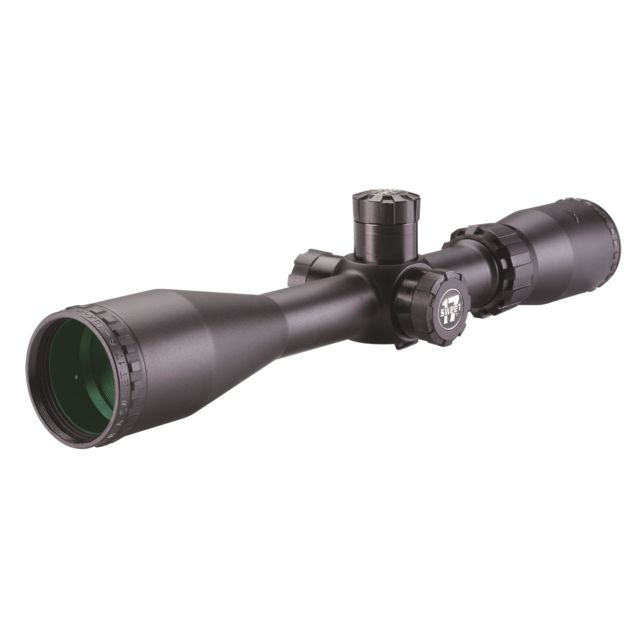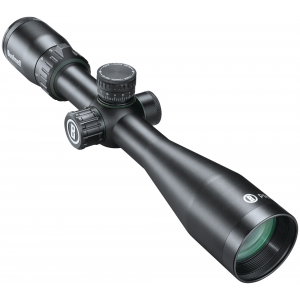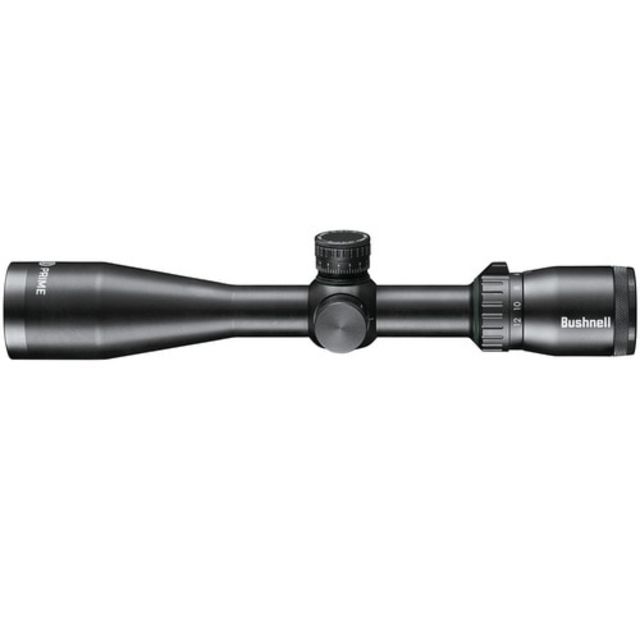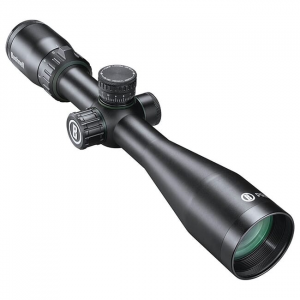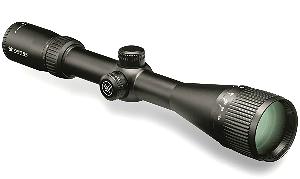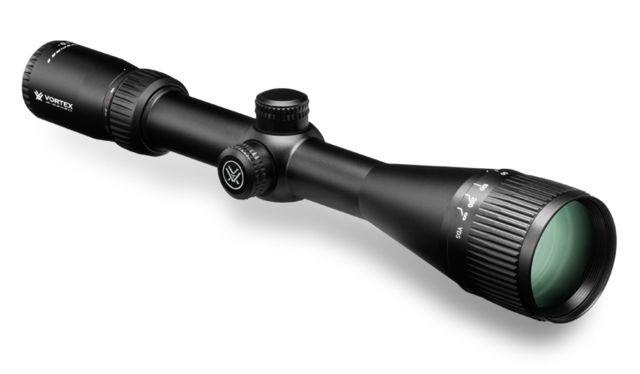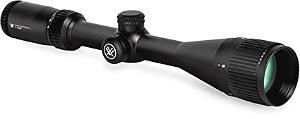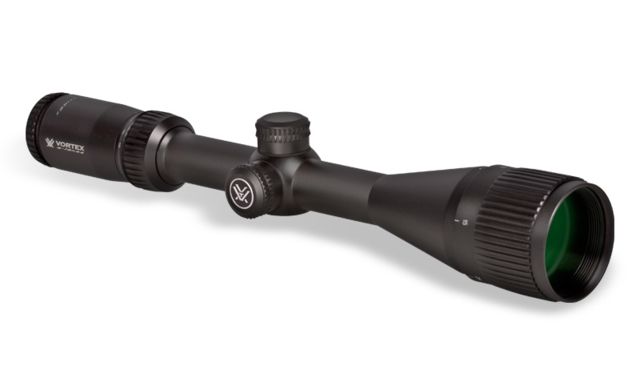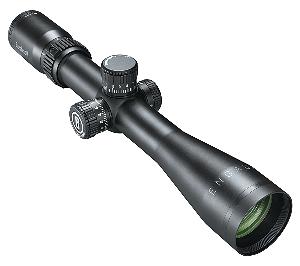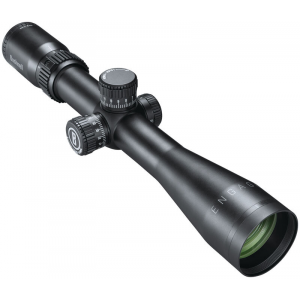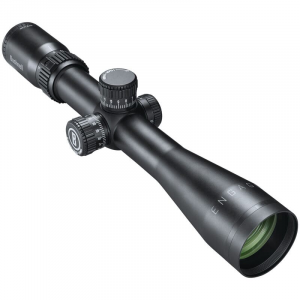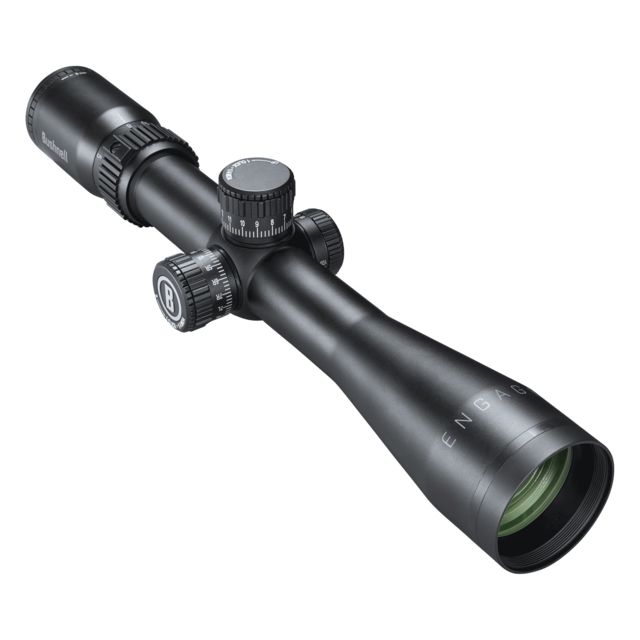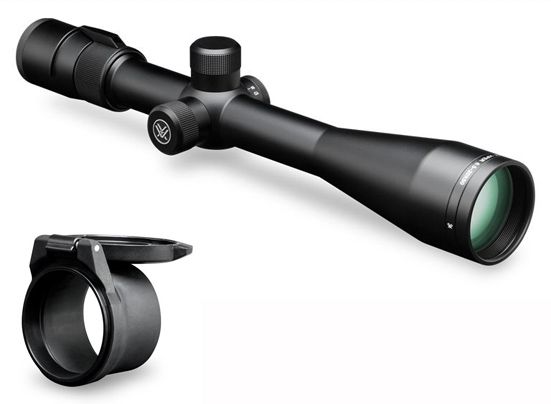As an Amazon Associate I earn from qualifying purchases. Amazon and the Amazon logo are trademarks of Amazon.com, Inc, or its affiliates.
Through this website and in person, I’m routinely asked the “what is the best scope for (fill in the blank) caliber?” question. Given the popularity of rimfire calibers, its should be no surprise that the two most common calibers I’m asked about from a scope recommendation perspective are the wildly popular .22 LR and the flat shooting .17 HMR.
While both of these calibers fall into the rimfire category, they are very different calibers with different caliber characteristics and performance. As such, I usually offer very different scope suggestions or recommendations for each. In this write-up, I’m going to focus on answering the question of what is the best scope for a 17 HMR?
In a Hurry to See the 17 HMR Scope Recommendations?
17 HMR Overview
But, before I get right into the conversation about scopes, I think it’s important to provide a brief overview of the 17 HMR caliber and its capabilities, as those capabilities play a role in my scope suggestions for the caliber.
The 17 HMR caliber has roots tied to rimfire enthusiasts who were working to create a flat shooting rimfire rifle round that was similar to the defunct Remington 5mm Magnum. The 5mm Magnum (which was also commonly called the 5mm RFM) was a bottleneck rimfire round that was introduced by Remington Arms in 1969.
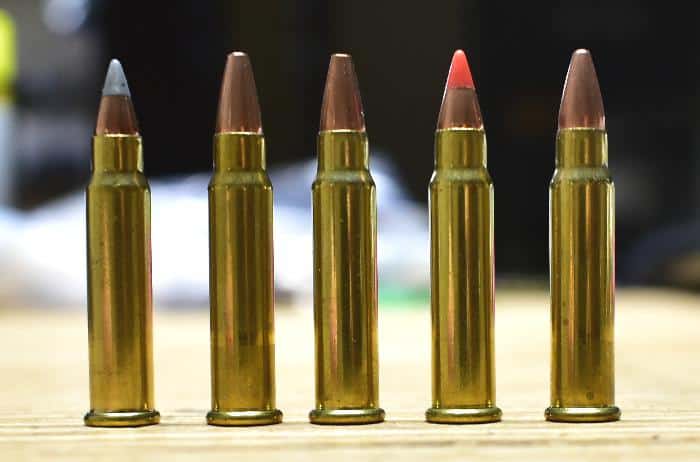
At that time, with a velocity in the 2300 to 2400 feet per second range, it was the fastest (in terms of round velocity), and most powerful commercial rimfire round in existence. The 5mm never really caught on and Remington discontinued production of their rifles chambered in the 5mm (which were the Model 591 and 592) in 1974 and then discontinued production of the 5mm ammunition in 1982.
In 2002, ammunition manufacturer Hornady introduced the .17 Hornady Magnum Rimfire, which became more commonly known as the 17 HMR (with HMR meaning Hornady Magnum Rimfire). This new caliber was built using a .22 Winchester Magnum Rimfire (more commonly known as the 22 WMR) case that was necked down to accept a .17 caliber bullet.
When the 17 HMR was first introduced, the ammunition was polymer-tipped bullets only, which were producing a velocity around 2600 FPS. Today, the 17 HMR is available in polymer tipped bullets, FMJ bullets, and JHP bullets. Originally, 17 HMR ammunition was only available in .17 grain bullet weights, but today, there are 15.5 grain, 17 grain, and 20-grain bullet options. In addition, there are a few select modern-day 17 HMR ammo configurations that are generating velocities of nearly 2700 to 2800 FPS.
It’s important to clarify that we are discussing the 17 HMR caliber, which is sometimes confused with two other similar 17 caliber-based rounds:
- 17 Hornady Mach II (commonly known as the 17HM2, 17 HM2, 17 Mach 2, 17 Mach II)
- 17 Winchester Super Magnum (which is commonly called the 17WSM or 17 WSM).
The 17HM2 is another Hornady-based caliber that was introduced in 2004. The 17 Mach 2 is built on a CCI Stinger case coupled with a .17 caliber bullet. While the 17 HMR was initially successful when it was launched, there were some complaints about the HMR being too destructive to smaller game animals like gray squirrels and rabbits to the point where the game meat was excessively damaged. A little personal interjection here: Having hunted squirrels with a 17 HMR, I can definitely say that any body shots will remove most of the usable meat.
Hornady introduced the 17 HM2 caliber as a potential solution to this issue as the Mach II had/has a velocity of 2200 FPS and was less destructive on smaller game species. While the 17 HM2 did develop a following, especially among small game hunters, it never found the success of the 17 HMR cartridge. While 17 HM2 ammo is still being produced, there are only a select few rifle manufacturers who still offer a rifle in this caliber.
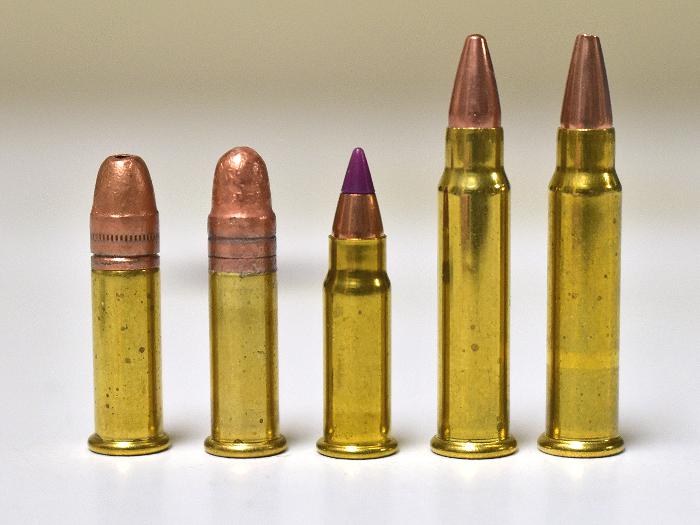
On a personal note, I have a few 17 HM2 rifles, and I think they are fantastic options as late season squirrel guns. They are especially effective late in the season when the leaves have fallen, and the potential shots at squirrels start to go above beyond 75 yards. The 17 Mach 2 is only slightly louder than a .22 and is very flat shooting out to 100 yards. If you zero a 17 Mach 2 in at 50 yards, you’ll be about an inch low at 100 yards and about an inch high at ranges under 50 yards. Unfortunately, the Mach 2 seems to be dying a slow death commercially.
The 17 Winchester Super Magnum was introduced by Winchester in 2012 and is currently the most powerful and fastest rimfire caliber that is commercially manufactured. It is built on a .27 caliber brass case that is necked down and mated to a 20 grain 17 caliber bullet, with a velocity of 3000 FPS.
The 17WSM cartridge is much like a 17 HMR on steroids and was built as an option for varmint hunters who hunt in an area that has restrictions on centerfire calibers and for those who wanted a rimfire capable of accurately shooting 200+ yards. While this caliber is not yet as popular as the HMR, it has found a following with varmint hunters with an effective range of 200 to 250 yards. According to Winchester, the 17 WSM offers more than double the down-range energy found in a 17 HMR.
The 17 WSM is definitely less affected by wind compared to the 17 HMR, but it’s also noticeable louder and more expensive to shoot compared to the HMR.
17 HMR Performance
The 17 HMR offers a flat shooting caliber that is best suited for small to medium-sized game animals out to 150 yards or so. After the 150-yard mark, the bullet starts to drop and loses a significant amount of velocity. This makes it questionable for ethical hunting out past 150 yards, except for the smallest of game animals. That being said, I’ve heard of shooters successfully taking prairie dogs at ranges of 200 to 250 yards with no wind.
Just to put the bullet drop in context, 17 grain polymer tipped bullet sighted in for 100 yards has the following approximate bullet drop:
- 150 yards is approximately 3”
- 200 yards is approximately 11 inches
- 250 yards is approximately 23 inches
- 300 yards is approximately 44 inches
Obviously, those numbers are estimates and can change depending on factors like bullet type, weather conditions, barrel length, ammo variances, etc.
The FMJ bullet options operate much like a scaled-down 223 round (and really are not that much slower than a 223 round), typically geared towards a 100 zero. Depending on the bullet grain weight and configuration, this bullet is best for medium-sized game animals at 100 yards or less.
Since the caliber was introduced, it has grown in popularity for long range plinking and small game hunting. The number of and type of available 17 HMR ammo options has grown as well, although no true “match” quality ammo exists yet for this caliber.
This caliber is extremely accurate out to 150 yards and is a viable solution for most any type of small game hunting. While the caliber and bullet appear diminutive compared to a larger 22 WMR and .22 LR, do not underestimate it, as this round packs a serious punch for its size.
However, just like any other caliber, there are always potential downsides. The main downside to the 17 HMR is wind. With a 17-grain bullet, most any wind will adversely affect the bullet, causing drift. And, with the smaller 15.5-grain bullets, the wind wreaks havoc on this caliber. In heavy wind, I’ve seen a 15.5 grain 17 HMR round drift at much as 3 feet off target at 100 yards. The 20-grain FMJ ammo seems to be less impacted by wind.
.17 HMR Scopes
Let’s get to the meat and potatoes of this article and talk about the rifle scope options for the 17 HMR. When looking at .17HMR scopes, you generally have scope options that are loosely grouped into the following two categories:
- Caliber specific 17 HMR scopes (commonly called 17 HMR BDC scopes)
- Non-caliber specific scopes
There are literally hundreds of scope options for an HMR rifle, so let’s go over each option individually as they can be a bit confusing.
17 HMR BDC Scopes
When most people start shopping for a 17 HMR optic, they start by looking for scopes specifically made for a 17 HMR. There are several of these types of 17 HMR caliber specific scope styles on the market.
Most all these scopes that are 17 HMR caliber specific are BDC based. BDC is a fancy acronym that means Bullet Drop Compensating (or Bullet Drop Compensation), and it’s a fancy way of saying that they are built to take into account the bullet drop of a 17 HMR bullet across various ranges.
This type of optic typically utilizes a turret system that uses pre-calculated bullet drop data based on a specific 17 HMR bullet weigh/bullet style coupled with an estimated velocity. For example, most 17 HMR BDC scopes have either one turret or multiple turrets that are configured for various 17 HMR ammunition configurations.
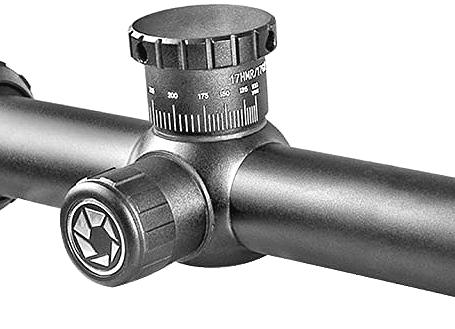
Once the appropriate turret is installed that matches the ammo being used, and the scope is sighted in at a specific distance (usually 100 yards), the shooter can then turn the special turret to either shorter or longer ranges, and the turret is configured to make the necessary hold over or hold under changes behind the scene.
The shooter turns the turret to the desired range, puts the reticle on the target, and fires a shot. For the most part, these pre-configured 17 HMR BDC scopes work fairly well as long as the shooter follows the ammo specifications and the muzzle velocity is accurate compared to the internal calibrations.
Here are the pros and cons of this type of scope:
| Pros | Cons |
|
Fairly easy to set-up and zero in. Once you have gone through the instructions, most shooters can be up and running with these types of scopes pretty quickly as there’s not a long learning curve. The BDC computations are done for you. This is especially helpful if you don’t want to learn the BDC drop or use a secondary dope chart or phone application. Will potentially extend the range of your 17 HMR. I’ve tested one of these BDC based scopes to 200 yards and was able to make hits on a 3” steel target with one of my 17 HMR rifles. Considering I’m not what I would call a great shooter, that’s pretty impressive for me. |
This style is only accurate if you run the specific ammo that is calibrated to the 17 HMR turret. That ammo may be restricted to a certain grain, such as .17 grain only, which may restrict your potential 17 HMR ammo options.
The 17 HMR turret calibrations are based on a specific bullet velocity. If your particular rifle has a shorter barrel, or you are using a suppressor, or anything like that which decreases the muzzle velocity, the preset BDC calculations no longer work accurately. You’ll be in the ballpark of the target, but not dead -on. Or, if your rifle ends up loving a specific ammo that runs slower than the preset average velocity, the BDC is off. Some of these BDC based scopes advertise that the shooter can go all the way out to 300 yards with a 17 HMR. That premise works fine for plinking or long range target shooting but is really pushing the extreme limits of ethical hunting range for the round. Just because the scope says you can shoot 300 yards, doesn’t necessarily mean that you should ethically take a 300 yard shot at a game animal. |
Non-caliber Specific 17 HMR Scopes
Rifle scopes that fall into this broad category include any scope model that is not specifically designed for a caliber (in this case, specifically for the 17 HMR) using either a turret BDC system or a caliber specific reticle.
Honestly, this is the largest category and is really describing virtually any scope model that is not made for the 17 HMR.
Non caliber specific scopes are the more common models, and what most shooters typically purchase for any and all calibers.
With this type of optic, most people make a purchasing decision off a combination of factors including the power magnification range, reticle option, features, and cost.
Here are the pros and cons of this type of scope for a 17 HMR:
| Pros | Cons |
| There a much wider range of power ranges and reticle options within this group compared to the 17 HMR caliber specific scope options.
These scopes could be removed from a 17 HMR and used on another caliber, where the BDC functionality on a 17 HMR specific scope will only work with a 17 HMR caliber. The wider range of scope means a wider range of scope costs compared to a caliber specific scope. A non-caliber specific scope also means that the shooter is not restricted to any specific 17 HMR ammunition that is tied to the integrated BDC function. These types of scope give the shooter the option to run whatever 17 HMR ammo that performs best in his or her rifle. |
The most obvious one is the fact that these scope options are not 17 HMR caliber specific and do not offer a 17 HMR specific BDC functionality.
These scope options are available in ranging reticles that will or may offer some kind of BDC functionality, but the shooter will need to manually test the 17 HMR performance at various ranges to define and validate the BDC function. With or without a BDC or ranging type of reticle, any hold over or hold under will need to be manually calculated using a dope chart or dope application. |
Which of These Types of Scopes is Best for a 17 HMR?
I am fortunate enough to have owned and tested both types of scopes on various 17 HMR rifles. While I did like the easy set-up and functionality of a caliber specific scope, I’m somewhat particular (or as my wife calls it “obsessive”) so I prefer a non-caliber specific scope for a 17 HMR, as I like the flexibility it offers.
One downside to using a non-caliber specific scope is it takes an investment of range time to figure out exactly where the your specific 17 HMR round impacts at what range and where that corresponds on the reticle.
My favorite way to do this is using a specific phone application as it allows me to input range and get an accurate hold over point for longer ranges. I’ll talk more about that specific app at a later time as it really deserves its own write-up.
If we were having this discussion at my day job regarding the type of 17 HMR optic, I’d make the following suggestions:
- If you are the type that prefers a fairly simple solution for shooting a 17 HMR at ranges of 100 yards and more, then I’d say that a 17 HMR specific optic might be a good option for you.
- If you are the type of shooter who enjoys learning the ends and outs of how your 17 HMR performs at various distances, or prefers to calculate the hold over either manually or via another method, then a non-caliber specific scope might be a better option for you.
As I mentioned before, I personally prefer a non-caliber specific scope on my 17 HMR rifles as I like the flexibility that set-up offers me at various ranges. I also like the fact that I can choose and run the specific 17 HMR ammo that my rifle prefers versus being restricted by the ammo choices on a caliber specific scope set-up.
So, let’s start talking 17 HMR scopes, and let’s start with 17 HMR caliber specific scope options:
BSA Sweet 17 SP 3-12X40 Rifle Scope with Multi-Grain Turret
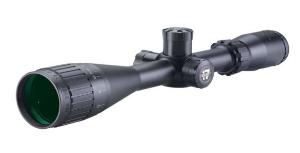 If you haven’t heard of BSA Optics, they are based in the UK and have been around since the mid 1800’s. While BSA offers a number of scope options, they really focus on the more budget-oriented market.
If you haven’t heard of BSA Optics, they are based in the UK and have been around since the mid 1800’s. While BSA offers a number of scope options, they really focus on the more budget-oriented market.
The particular second focal plane scope model is built specifically for a 17 HMR rifle, and the BDC based turret will work with either a .17 grain or .20 grain HMR bullet. Unfortunately, BSA does not support the smaller 15.5 grain bullets yet.
This model is part of BSA’s Sweet series of scopes, which are all caliber specific using a BDC functionality. The Sweet series is probably BSA’s bestselling scope series.
BSA has two scope series within the Sweet scope family, and those are the Sweet AO series and the Sweet SP series. Between the two, I much prefer the side focus found on the Sweet SP series.
Within the BSA Sweet SP line, there are two 3-12X40 configurations: one having a non-illuminated 30/30 reticle, and one having an illuminated 30/30 reticle (Called a Cross RGB reticle). Between the two, the illuminated version might be a better option if you are using it for low light hunting situations.
This model comes in a 3-12 power magnification range with a 40mm objective lens diameter and is built on a 1-inch tube.
If you don’t plan on shooting much over 100 yards with the 17 HMR, but like the integrated 17 HMR BDC function, then this scope might be worth checking out.
| Pros | Cons |
| The previously stated configuration to the 17 HMR caliber
Side focus that goes all the way down to 10 yards (versus the older BSA Sweet AO models that would only go down to 25 yards. Priced at a cost that is budget friendly and won’t break the bank. |
Made in China and the glass is about what one would expect for a sub $150 scope.
While the eye relief is advertised at 4”, it seems much less than that. The BDC functionality only works with specific brands and variations of 17 HMR ammunition. |
Here are a few places where I located some decent deals on this scope model:
BSA Sweet 17 SP 6-18×40
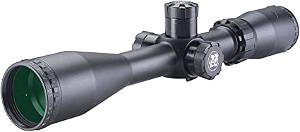 This model only comes in a non-illuminated version with a BSA 30/30 reticle (which is basically a duplex reticle).
This model only comes in a non-illuminated version with a BSA 30/30 reticle (which is basically a duplex reticle).
This second focal plane model features a 6-18 power magnification range with a 40mm ocular objective and is also built on a 1 inch tube.
Like the 3-12 model, the 6-18 version is also available in a version with AO and a version with side focus. I much prefer the side focus as it also focuses down to 10 yards.
If you plan on shooting the 17 HMR at ranges up to and beyond 100 yards, then I think the 6-18 model is a better option as the higher magnification is useful at longer ranges. (This is actually the model I had on one of my 17 HMR rifles but have since sold and the glass went with the rifle).
| Pros | Cons |
| The 6-18 magnification range is low enough to use on up close targets and high enough that you can reach out if needed.
The side focus going from 10 yards to infinity is a plus for hunting as you never when a game animal is going to show up at close range. |
The glass is just OK for a sub $150 scope but does have some distortion at max power (which should be a realistic expectation of a scope in this price range)
The added power range brings the weight up another 3 ounces, which isn’t too bad but a con, nonetheless. Like the 3-12 BSA Sweet 17 scope, the BDC functionality on this model is tied to specific 17 HMR ammunition, which your 17 HMR may or may not love. However, BSA does support enough of the various 17 ammo options that you “should” be able to find something that your rifle likes accurately enough. |
If you are interested in this particular BSA scope, here are some places I found them at reasonably good prices:
Bushnell Prime 3-12X40 Multi-Turret Scope
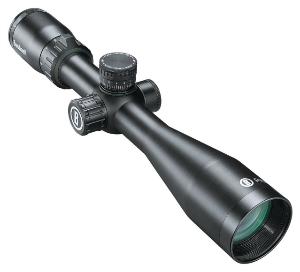 Manufactured by Bushnell, this scope model actually offers a number of caliber-based scope turrets, including a 17 HMR model. In terms of rimfire options, it also features a .22 LR turret option.
Manufactured by Bushnell, this scope model actually offers a number of caliber-based scope turrets, including a 17 HMR model. In terms of rimfire options, it also features a .22 LR turret option.
The 17 HMR turret that comes with this scope is calibrated for a 17 grain bullet and has BDC functionality that is set out to a max of 250 yards.
This second focal plane model is built on a 1 inch tube made from aircraft-grade aluminum and features a power adjustment range of 3-12 with a 40mm adjustable objective. This Multi-turret model features a side focus adjustment that goes all the way down to 10 yards.
Bushnell also offered a 17 HMR calibrated scope that was specifically built for the Savage A10 semi-auto chambered in 17 HMR. Savage recommends a special 17 HMR ammunition that they helped designed which runs about 200 FPS faster than most factory 17 HMR ammo. As such, I’d probably stay away from that specific Bushnell 17 HMR scope as the BDC functionality will be slightly off for any rifle not running the specific Savage A17 ammo or any rifle other than a Savage A17.
| Pros | Cons |
| The Bushnell Prime series feature multi coated optics, and I think this model offers better optical quality than either of the BSA models I mentioned above.
I’m a fan of the side focus (parallax adjustment) that goes all the way down to 10 yards. The eye relief and field of view is shooter friendly and offer a full view without distortion. |
The BDC turret on this model looks to only be configured to work with 17 grain 17 HMR ammo, which restricts what you can run in a rifle to make the BDC work. This approach eliminates the potential of all 15.5 grain or 20-grain ammo.
While I the concept of a multi-turret platform that will work with several calibers, I think it sounds better on paper than it actually works in real life. I would prefer that Bushnell offer this model in a 17 HMR only variant with turrets that work for .17 grain and 20-grain ammo options. Given the potential range of the 17 HMR round, the 3-12 power range is a little bit underpowered for my personal needs. If you are keeping your shots under 100 yards, you would be OK. |
If this Bushnell scope catches your eye, here are a few locations I found it for sale:
If you are leaning towards a scope made specifically for a 17 HMR, then I’d consider choosing from any of the models above.
Now let’s talk about my non-caliber specific 17 HMR scope recommendations. To be fair, if you’ve been reading lots of 17 HMR optic reviews, then some of the scope models I suggest may be ones that you haven’t seen before as I may have a different opinion from other reviewers (maybe because I actually own and shoot 17 HMR rifles).
Vortex Optics Crossfire II 6-24X50 AO with Dead-Hold BDC
If you’re looking for a scope with the magnification range to really push the distance limits of your 17 HMR, then this Vortex model may be worth a look.
This Vortex Optics Crossfire II model is built on a 30mm tube and features a 6-24 power magnification range with a 50mm adjustable objective. The 6-24 power is versatile enough that you can shoot closer targets in on the lower 6X and 7X powers, and then power up to 24X for the 200+ yard shots (if desired).
While this Vortex optic is available in two different reticle configurations, I most definitely prefer the Dead-Hold BDC. While this reticle is not specifically calibrated to the 17 HMR, with a little bit of range time and experimentation, you can quickly figure out which BDC dot on the reticle works at what yardage.
| Pros | Cons |
| The 6-24 power range is a plus in my book for long range shooting.
The adjustable objective will focus all the way down to 10 yards, which is nice for your closer in shots. Although made in China, the glass is actually quite good for the sub $325 price. With a little practice, the Dead-Hold BDC reticle is easily learned for the 17 HMR without any advanced BDC math. |
This model is only available in an adjustable objective, while I really prefer side focus. It’s not a deal breaker, but side focus is easier to use while you’re in the glass.
Coming in at 23.6 ounces, this is not a lightweight scope and might not be the best option on a hunting rifle where you will be covering lots of ground with it strapped on your back. While the eye relief is more than acceptable, it’s a bit critical with side-to-side head movement. |
If you are interested in this Vortex 6-24 scope, then here are a few places that I found it for sale:
Vortex Optics Crossfire II 6-18X44 AO with Dead-Hold BDC Reticle
If the Vortex 6-24X50 model above was too much scope for you or too heavy for your needs, then the 6-18 model might be a better option.
This scope is built on a 1-inch tube (versus the 6-24, which is a 30mm tube) and comes in a 6-18 power configuration with a 44mm ocular bell.
Like the 6-24 model above, I also much prefer this scope in the Dead-Hold BDC reticle to take advantage of its BDC capabilities. This 6-18 configuration is also available in an illuminated V-Brite reticle, but it lacks the BDC functionality. While I like illumination, I’d skip it in favor of the BDC function for a 17 HMR.
| Pros | Cons |
| Surprisingly good optical quality and light transmission for a sub-$350 optic.
The 6-18 power range is a great choice for the HMR caliber. The AO focuses down to 10 yards, which is a huge plus in my book. Like the 24X model, the BDC function works well with the 17 HMR caliber, if you take the time to learn the caliber performance at ranges using the BDC dots. |
This model weighs in at just under 20 ounces so it’s not quite as heavy as the 24X model, but that is still not what I would call a lightweight scope.
While I like scopes built on a 1 inch tube, I prefer a 30mm tube as they offer a greater range of elevation adjustment (if needed). The eye relief is decent but slightly critical with side to side movement. |
If this Vortex 6-18 model caught your eye, here are a few places that I located it for sale:
Sightron S-TAC 4-20X50 with MOA-2 Reticle
 This may be a scope suggestion for the 17 HMR that you haven’t seen before. If you are a paper puncher or target shooter with your 17 HMR, then this may be a potential scope candidate for you.
This may be a scope suggestion for the 17 HMR that you haven’t seen before. If you are a paper puncher or target shooter with your 17 HMR, then this may be a potential scope candidate for you.
The S-TAC series of scopes is a mid-range series within the Sightron line of scopes, and is built on a 30mm tube. The glass is not quite as good as the Sightron SIII line of scopes, but is still above average.
This model features a 4-20 power range with a 44mm objective. Its available in two reticle options, a MOA-2 reticle and a standard duplex reticle. For the purposes of these recommendations, I much prefer the MOA-2 reticle for paper punching or pinging steel.
However, if you are hunting with your 17 HMR, then this might not be the best option for you, and I’ll explain why. The MOA-2 reticle features a small target dot with ranging hash marks on the vertical and horizontal reticle lines. This makes it ideal for long-range shooting at small targets.
However, the center dot is small so it’s hard to see in low light. If you are a hunter and may be shooting in low light, then there are better options for you on this page. The only exception I would offer for that rule would be if you are hunting prairie dogs or ground squirrels. As most of the hunting for those two game species happens during standard daylight hours, this reticle works well that specific type of hunting.
Like I mentioned before, if you are just doing targets or shooting metallic steel targets, then this is a great option for the 17 HMR (I have one on one of my 17 HMR set-ups).
Now you will have to put a bit of time in at the range to learn the reticle hash marks, or use a shooting application to learn how your 17 HMR and your desired ammo interact at what ranges.
| Pros | Cons |
| Good, clear glass with excellent light transmission for the costs, even at the max 20X power.
Side focus that goes all the way down to 10 yards. Outstanding reticle for shooting small targets at longer ranges. Long and generous eye relief. The scope is made well (built like a tank), but comes at the expense of weight |
At 23.8 ounces, this scope weighs much more than it looks like it should.
The MOA-2 reticle nearly disappears in low light situations |
Here are a few places where I located this S-TAC for sale at good prices:
Bushnell Engage 3-12X42 with Deploy MOA Reticle
If you prefer a smaller and lighter 17 HMR riflescope, then have a look at the Bushnell Engage scope in a 3-12X42 configuration with a Deploy MOA reticle.
Built on a 30mm tube, the 3-12 power range is ideal for short to medium range shots, and the Deploy MOA reticle works well with a 17 HMR caliber.
Like most of the other non-caliber specific scope models I’ve mentioned, you’ll need to spend a little time figuring out the Deploy reticle, but it’s small enough to allow for hits on small targets at ranges over 100 yards.
A customer at my day job uses this same scope on an HMR in a 4-16 configuration for short range ground squirrel hunting and knows exactly what MOA marks to hold for on 100 and 150 yard shots.
| Pros | Cons |
| The glass and light transmission is surprisingly good for a scope in this price range.
The Deploy MOA reticle works well with a 17 HMR caliber. This scope comes in at 17 ounces so it’s a lighter option than the other scopes I’ve suggested so far. This model features side focus that goes all the way down to 10 yards. |
The eye relief is advertised as 3.6 inches, but it’s more like 2.75 inches. While its shorter than I like, the eye relief was very forgiving.
While the reticle works well with a 17 HMR, it may take a little experimenting to identify which MOA mark works at which specific distance. However, once you’ve got it down, it works well. The power adjustment ring was crazy tight at first and took some serious effort to turn. It took some time to loosen up. |
Here are a few spots where I found this Bushnell Engage scope for sale:
Bushnell Nitro 2.5-10X44 with Deploy MOA Reticle
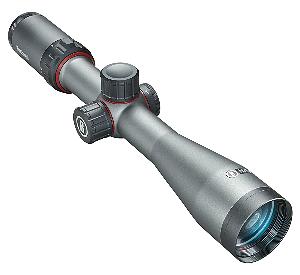 If the Bushnell Engage I mentioned above in 3-12 power is still just too much scope for your liking, then have a look at the Bushnell Nitro 2.5-10X44 with the Deploy MOA reticle.
If the Bushnell Engage I mentioned above in 3-12 power is still just too much scope for your liking, then have a look at the Bushnell Nitro 2.5-10X44 with the Deploy MOA reticle.
Now I will caution you: if you do look at this scope and start shopping for it, be careful as Bushnell offers this scope in an SFP configuration and an FFP configuration. I’m focused on the SFP configuration as I think it offers a better option for most shooters/hunters with the 17 HMR.
Like the Engage series, the Nitro models are built on a 30mm tube, and this model features a 2.5 – 10 power range with a 44mm objective.
The Nitro series of scopes from Bushnell is a few steps above the Bushnell Engage I mentioned above in glass quality. I mention that fact because if you lean towards a lower powered scope (like a 2.5-10) for your 17 HMR, then I’d buy the best quality glass in your budget as you may need that extra image clarity if you start stretching your HMR out small targets at distances past 100 yards on 10X power.
| Pros | Cons |
| The multi coated lens quality on the Nitro series is very crisp and clear for a lowered power scope.
As mentioned before, Bushnell’s Deploy MOA reticle works well in conjunction with the 17 HMR caliber. The eye relief is advertised at 3.7 inches and it functions very well. |
The costs associated with this scope are higher for a lower power range.
Weight – This scope weighs in a nearly 24 ounces which is very heavy for a scope this short and compact. There have been rumblings here and there in the scope industry that Bushnell may be phasing out the Nitro scope series, so that’s something to take into account. |
Here’s one of the few locations where I found this Bushnell Nitro scope on sale:
So, those are my personal favorites when talking about a non-caliber specific scope for a 17 HMR.
FAQS
Here are some of the more common questions that I’ve been asked in person (at my day job) or via email off this site in relation to rifle scopes for the 17 HMR:
I really want a 17 HMR scope with bullet drop, so what you suggest for those?
If you’ll go back to the section above about 17 HMR BDC scope recommendations, those scopes all feature either a 17 HMR based bullet drop turret or a 17 HMR based bullet drop reticle.
What power scope should I get for a 17 HMR?
A scope’s power range is a very personal preference that I usually try to base off what type of shooting or hunting I’m using the rifle for, along with my own personal likes.
If you’ve read any of my other content on scopes, then you’ve probably seen my talk about my eye issues (If not, here’s a quick recap: I’m right-eye dominant, but my right eye is much weaker than my left. So, when I close my left eye to shoot, I’m using my much weaker right eye).
Because of that situation, I personally prefer an optic with a power range above the typical 3-9 range. Given the potential range and accuracy of the 17 HMR, I don’t have a 17 HMR rifle with a scope less than a 4-16 power. Obviously, your own personal preferences about power ranges may greatly vary from mine, and I don’t really think there’s a “wrong” power range for a 17 HMR.
I would suggest shopping for a power range that you are comfortable with, but also one that will allow you to take advantage of the range on a 17 HMR, should you decide to try some long-range shooting. Personally, I’d rather have the needed power range and not use versus needing it and not have it available.
What are the top varmint scopes for a 17 hmr?
When people talk about varmint hunting, I usually take that to mean hunting the following species:
- Coyote
- Fox
- Prairie Dog
- Ground Squirrel
- Ground Hog
While a 17 HMR is more than sufficient for ethically taking Foxes, Ground hogs, and Ground Squirrels; I think it’s a borderline caliber for ethically taking coyotes. Now, that being said, I’ve certainly taken a coyote or two with a 17 HMR, but those were more shots of opportunity versus situations when I was dedicated coyote hunting.
However, it’s a free country, and if are planning on hunting coyotes with a 17 HMR, I’d at least make the following suggestions:
- Keep your shots at 100 yards or less as the HMR really starts to lose some energy past 100 yards.
- Use a 20 grain FMJ or JHP bullet. Stay away from the 15.5 grain or 17 grain poly tipped models as the heavier 20 grain rounds offer better terminal performance on game that large.
Any of the scopes that I mentioned above, including the 17 HMR specific scopes and the 17 HMR non-specific scopes, would work for hunting any of the species listed above.
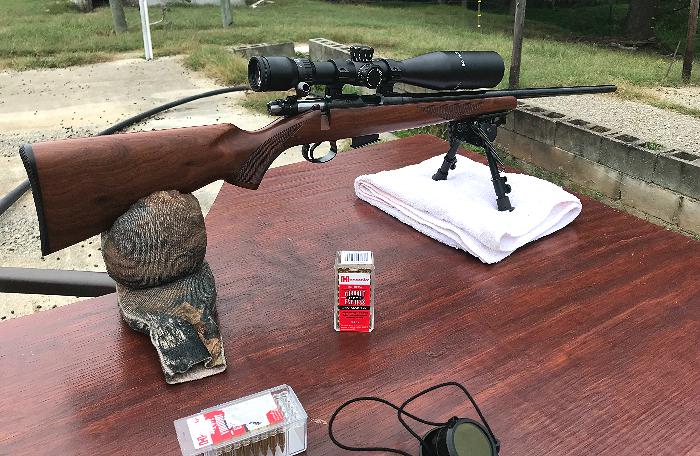
For hunting ground squirrels, groundhogs, and prairie dogs; I personally lean towards a scope option for the 17 HMR that is at least in the 4-20 power range as ethical shots for those smaller animals can easily get to 150+ yards. One of my favorites that that type of hunting is the Sightron S-TAC 4-20 with the MOA-2 reticle I mentioned above.
I remember seeing a bushnell 17 HMR scope that was made specifically for a 17 HMR? But I’m having trouble locating it now? Is it still available?
Bushnell does offer a scope with offers BDC functionality for a number of calibers, including the 17 HMR. However, It sounds like you are talking about the Bushnell A17 scope that came in a 3.5-10X36mm configuration. That scope was part of a collaboration between Savage (makers of the A17 semi-auto 17 HMR rifle) and Bushnell scopes.
This scope was built specifically for the Savage A17 rifle using a special CCI based 17 HMR ammunition that was also specifically developed for the semi-automatic action of the A17 rifle.
Like most 17 HMR specific scopes, the Bushnell A17 models uses BDC elevation turrets that are calibrated to the CCI ammo coming out of the A17 muzzle. To compensate for the semi-auto nature of the A17, the CCI A17 ammo runs around 200 FPS hotter than most 17 HMR rounds.
I did not get the feeling that it was a great seller for Bushnell as it’s on the way to being phased out. Bushnell has already removed it from their current web site. However, I sold a few at my day job when there were readily available, and most of the customer feedback I received about that scope was fairly positive.
While you can certainly still find this specific scope for sale (I’ll include some links below), it’s really geared specifically for the A17 and the BDC functionality most likely won’t work all that well for any other 17 HMR rifle as the FPS on the CCI ammunition is faster than most other 17 HMR ammo.
What are the best .17 HMR scopes to consider?
This is such a difficult question that I’m almost hesitant to even try to answer it, but I see it over and over again.
First, as I’ve repeatedly said on this site, the word “best” is an adjective that is typically but not always, based on opinion, not facts. Ask 10 different 17 HMR owners what the best .17 HMR scopes are, and I guarantee that you’ll get 10 completely different scope answers. Some of the answers may be the same, but there will not be a consensus.
I’m not trying to dodge the question, but the best 17 HMR scope is the one that works best on your 17 HMR rifle for your specific shooting needs.
Honestly, my best 17 HMR scope suggestions may not work for you at all for the following reasons:
- You are using your 17 HMR in a different manner than I do.
- None of the 17 HMR scopes I’ve suggested are within your budget
- You only like one specific sporting optic brand (for example Leupold) and I don’t have any Leupold scopes listed in my suggestions.
This list could go on and one, which is why I always try to qualify that the scopes I recommend are my personal “best” based on my experiences and knowledge. Let’s be honest here. your “best” needs may be completely different.
Asking me what’s a good scope for a 17 HMR, is a much easier question to try to answer.
What’s a good Vortex 17 HMR scope?
While Vortex does not offer a scope made specifically for a 17 HMR, they do offer a number of scopes that perform exceptionally well with the 17 HMR caliber.
I’ve mentioned two Vortex scopes (from the Vortex Crossfire II series) in my 17 HMR scope suggestions above. However, most Vortex scope that is available in their Dead-Hold BDC reticle (or any other BDC based Vortex reticle) would be a good candidate to be mounted on a 17 HMR.
The Crossfire II series are some of my favorite models as the glass is decent, they come with the Dead-Hold BDC reticle, and they are reasonable affordable. The Vortex Diamondback scope series is another Vortex Optics series that would work as well.
In addition to the Crossfire II series, here are a few other Vortex scope models that would work on a 17 HMR rifle:
Vortex Viper 6.5-20X50 PA with Dead-Hold BDC Reticle (Although this model only focuses down to 50 yards)
Vortex Strike Eagle 4-20X50 with EBR-4 Reticle – I’ll also mention one of my favorite Vortex scopes for a 17 HMR, but it’s been discontinued. However, you can still find some new ones here and there:
I’ve looked at all your 17 HMR scope suggestions, but don’t understand why you don’t have any Leupold 17 HMR scope options listed?
A fair question, and here’s my answer:
I like the Leupold line of scopes, but they no longer offer a scope that is really geared towards a 17 HMR. Most all their current rimfire scope models have a fixed 50-yard parallax adjustment, meaning it can’t be adjusted down below the 50-yard mark.
Leupold use to offer a scope series called a VX3 EFR model that came in a 6-20 configuration. The EFR functionality would let you focus down to about 10 yards, so it was a legitimate option for a 17 HMR, but it’s been phased out.
About the only option would be to choose an entry-level or mid-level Leupold scope that will accept their Custom CDS dial system and then purchase a CDS dial made for the specific 17 HMR round you shoot. While that option would work, it would also get pretty expensive pretty quickly.
Nothing against Leupold, I just feel that there are better options on the market for a 17 HMR that cost significantly less.
Why don’t you recommend any Nikon 17 HMR scopes?
I actually like Nikon as far as rifle scopes (and cameras), and own a few Nikon scopes personally.
I did not include any Nikon scope models as recommendations for the 17 HMR for the following reasons:
(1) As of January 1st, 2020, Nikon was getting out of the rifle scope business. Given that fact, I did not feel comfortable recommending a Nikon scope as I don’t know how long they will still be available in the market for purchasing.
(2) Nikon no longer offers a scope that is specifically made for the 17 HMR caliber.
(3) With the exception of their Rimfire line of scopes, Nikon does not offer any other scope models that feature a parallax correction or side focus that goes down below 50 yards. This could be an issue if you were hunting with a 17 HMR and had to take a shot at a game animal under 50 yards. Without the ability to focus down below 50 yards, the image in the scope would be fuzzy and out of focus (a pet peeve of mine).
I like the Nikon Rimfire series of scopes, but only the EFR model will focus down below 50 yards. The other scope models within that line top out at a 3-9 and 4-12 model, which is in a lower power range for a caliber that shoots out past 100 yards at tiny targets.
Although there are many, many 17 HMR riflescopes on the market today, buying a scope for your 17 HMR doesn’t have to be a difficult process. Any of the specific optics I’ve suggested above are good options.
As I come across new questions related to a 17 HMR rifle scope, I’ll update this section.
I’ve been working in the firearms and sporting optics industry for over 20 years, with a personal and professional interest in all things related to rifle scopes, Through a combination of work experience, formal training, and personal experiences, I have extensive experience mounting, testing, and evaluating different rifle scope models across most major optical brands.
